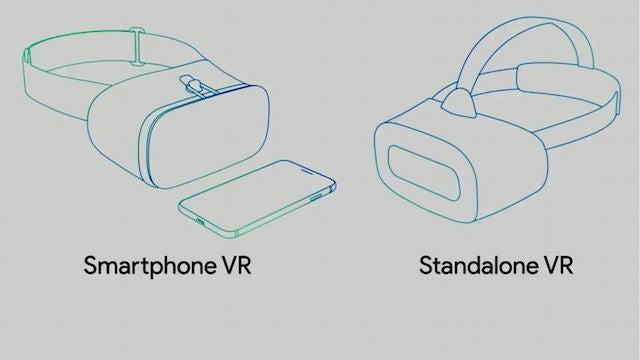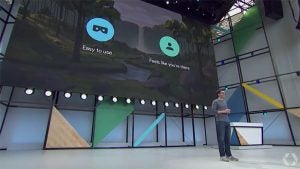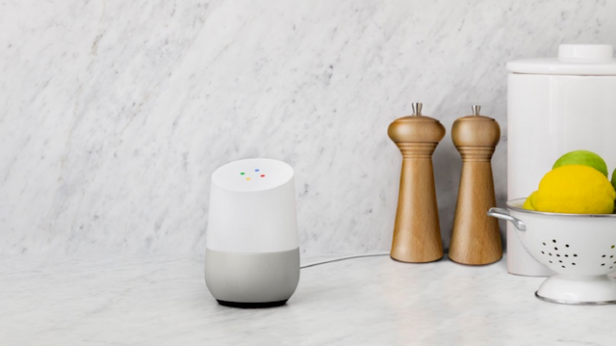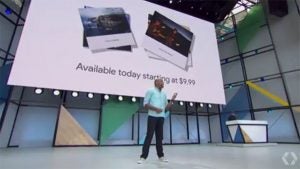Google I/O 2017: The 8 biggest keynote announcements

Google I/O 2017 Keynote: Highlights, latest news and analysis
The annual Google I/O 2017 developer conference is underway, and the keynote has already been and gone. Here’s everything you need to know, including the latest Google I/O 2017 news and all the announcements that actually matter.
The Google I/O developer conference is running from May 17 to May 19, and takes place at the Shoreline Amphitheatre in sunny Mountain View, California, with the main keynote kicking off things on Wednesday May 17.
Here are the eight Google I/O keynote announcements you need to know about.
1) Android O boosts your phone’s intelligence
We also received an update on Android from Dave Burke, VP of Engineering at Android, who revealed that 82 billion apps and games had been installed by Android users in the last year – that’s 11 apps for every person on the planet.
 Dave Burke, Vice President of Engineering at Android
Dave Burke, Vice President of Engineering at Android
Burke talked up picture-in-picture integration, which is being added in the upcoming Android O update this summer. That’s coming alongside ‘autofill’, which will be familiar to Chrome users who regularly fill out forms that require personal information to be entered. Well in Android O, autofill is being extended to apps, which “takes the pain out of setting up a new Android phone or tablet”, according to Burke.
There’s also a new feature called ‘Smart Text Selection’. In Android, you typically double-tap or hold to select words for copying and pasting – but Google wants to improve that. By using machine learning, Google will understand what you want to select, so you spend less time fiddling around with selection handles. So if you double-tap on part of an address, it will select the whole address, because it understands what an address is. It’s the same story with phone numbers or e-mail addresses or the name of a restaurant, too.
Related: How to download the Android O beta
2) Standalone Daydream VR headsets
One of the biggest announcements was that Google had teamed up with Qualcomm to build a standalone Daydream virtual reality headset.
This builds on last year’s Daydream platform, but removes the need for you to dock a smartphone into a headset. Instead, the head-mounted display will contain all of the necessary features, including a display and processor – and even offer positional tracking. It’s been designed using Qualcomm’s Snapdragon 835 VR reference platform, and (unsurprisingly) features the Snapdragon 835 chip we’ve seen used in flagship phones like the new Samsung Galaxy S8.

Importantly, neither Google nor Qualcomm will be actually selling these headsets to people. What the two companies have created is actually a reference design that will be used by third-party device makers to create their own VR headsets. We’re expecting these headsets to launch later this year. HTC and Lenovo have both been confirmed to be building devices.
We also learned that the Samsung Galaxy S8 would be adding Daydream support later this year, and that LG’s next flagship phone – likely the LG V30 – would also support the technology.
Related: Google VR standalone headsets
3) Google Assistant updated
Google confirmed that the Google Assistant virtual helper would soon support typing requests, for when you’re not feeling comfortable with talking aloud. Google also said that it’d made significant strides in how well Google Assistant understands your commands.
“Almost 70% of requests to the Google Assistant are expressed in natural language, not the usual keywords,” explained Scott Huffman, VP of Engineering for Google Assistant. “We’re really starting to crack the hard computer science of conversationality.”
There’s also a new Google Assistant SDK that will enable third-party companies to build Google Assistant into their devices, including smart speakers. There are plenty of companies working on this integration, including Sony, Panasonic, and LG.
Related: Google Pixel 2
4) Google Assistant lands on iPhone
As expected, Google announced that the Google Assistant virtual helper would become available on iOS devices.
The software launched back in 2016, but has only been available on Google devices so far – Google Home or Android Nougat devices, for instance.
But soon, iPhone users will be able to download the Google Assistant app from Apple’s own App Store, giving Siri a direct rival on iOS. However, it’s unlikely that Google Assistant will be as deeply integrated into the iPhone as Siri, so we’d guess that functionality may be slightly more limited.
Related: WWDC 2017
5) Google Lens Revealed
Google also announced a new smart context technology using your phone’s camera called Google Lens. “Google Lens is a set of vision based computing capabilities, that can understand what you’re looking at,” explained CEO Sundar Pichai.
For example, you can point your phone at restaurants, and using location data, the Google Lens will provide information like reviews, based on what your phone is looking at. It will be shipping first in Google Assistant later this year.
“If you run into something and you want to know what it is, say a flower,” he told developers, “we can tell you what flower it is.”
Related: What is Google Lens?
6) Google Home News and Updates
Following this year’s UK launch, Google confirmed that the Google Home smart speaker would be launching in Canada, Australia, France, Germany, and Japan this summer.
Google also announced that there would be a bunch of new features incoming. “We’ve been really busy,” said Rishi Chandra, VP of Home Products. “
For instance, there will now be proactive assistance. You’ll be notified of upcoming events, as well as flight status changes and traffic delays.
You’ll also get hands-free calling on Google Home, which is a service that’s already offered by rival device Amazon Echo. You’ll be able to call any landline or mobile number in the USA completely free of charge – assuming you’re already in the USA, of course. Also, calling is personalised, so saying “call my mum” will ring different numbers depending on whose voice has been recognised.
Related: Google Home review

This hands-free calling will roll out to all US-based Google Home devices over the next few months.
What’s more, Spotify, in addition to their subscription service, will be adding their free music service to Google Home. There’ll also be support for SoundCloud and Deezer soon, joining existing supported services like YouTube Music.
There’s also Bluetooth support coming, so you can play your own tunes from an Android or iOS device. Finally, TV control support is also being added for new services like HBO Now, alongside Netflix and YouTube, which were already supported.
Related: What is Bluetooth 5?
7) Google Photos is getting smarter
You know when you take a great photo with friends, but you forget to send it to your mates? That perfect wedding shot your new wife keeps bugging you for? Well Google is rolling out suggested sharing for Google Photos, which will prompt you to share images with people who it knows are in the photo. Your friends will never have to miss out on an epic group selfie again. Poor them. Of course, you could still deny them just like before…

Google also launched shared libraries, which lets you share an entire selection of photos with a person. For instance, you can select to show photos that include images of your children (tagged via machine learning, of course) with your mum. Or all photos after a certain date, like sharing every photo with your partner that you’ve taken since you first met them. It’s all automatic, so you don’t even need to do anything once you’ve set up those initial sharing parameters.
Both those features will be rolling out on iOS and Android in the coming weeks.
But wait, there’s more! Google is also making it easier to print your photos using Google Photos. There’s now a new feature called Photo Books that lets you compile a scrapbook of great snaps from your phone, and then get it printed out into a physical product. The books cost $9.99 for a 7-inch softcover book or $19.99 for a 9-inch hardcover book. Both books are 20 pages long, but you can pay more for additional pages. Magical.

The Photo Books service is available in the USA starting today, with plans to roll out the service to more countries soon – UK users, get those fingers crossed.
8) Android Go will improve budget phones
Android Go is a new project that intends to optimise user experiences for people with affordable, entry-level devices. All devices with 1GB of RAM or less will get the Go configuration starting with Android O.
For example, memory is expensive, so Google is making a number of optimisations so that Android O devices built with Go configuration to run smoothly for devices with less than 1GB of memory.
On these devices, you’ll also have the Chrome Data Saver feature turned on by default, to simplify web-pages when you’re using a slow connection. This saves users over 750TB every day, according to Sameer Samat, VP of Android and Play.
 Sameer Samat, VP of Android and Play at Google
Sameer Samat, VP of Android and Play at Google
There’s also a new preview mode for YouTube videos on ‘YouTube Go’, which will let you see a low-res montage from a video so you can decide whether to watch it. You’ll also get to see how much data it will use, before actually watching it.
There will also be ‘lite’ versions of apps – some of which already exist – that will be useful in offline states, take up limited storage and memory, and offer good battery performance. These will be highlighted specifically in the Google Play Store.
Android Go is a clear bid to get more people in developing markets using Android phones, by making cheap phones better in areas where you might have poor data coverage.
Related: What is Android Go?
Google I/O 2017 Keynote: Re-watch all the action here
Missed the I/O 2017 keynote? Fear not, you can still watch the event in its entirety below – the action begins at around the 30 minute mark.
Google’s Progress by the numbers
Sundar Pichai, Chief Executive Officer at Google revealed a bunch of interesting stats about how Google services are doing. Here are a few:
- Over a billion monthly active users across seven key services like Gmail and YouTube
- Over one billion hours of video consumed each day on YouTube
- Over one billion kilometres navigated on Google Maps every day
- Over 800 million monthly active users on Google Drive
- More than 500 million active users on Google Photos
- 1.2 billion photos uploaded to Google every day
- Two billion active users of Android globally, as of this week
What do you think the next version of Android will be called? Let us know in the comments.


